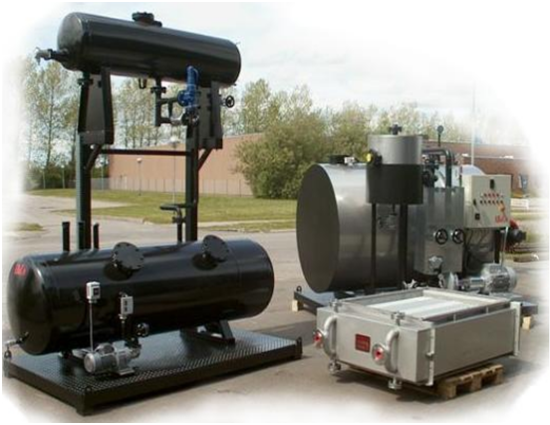19 Feb 7 Best Practices for ‘Smooth Maintenance Shutdown’ of a Thermal Fluid System
A thermal fluid heating system is complex in its own right and deserves to be maintained through a well-defined set of protocols for maximized output and safety.
Just like how the design of the system and the way of handling its thermal fluid contribute to the performance, a well-planned maintenance shutdown also plays a significant role in enhancement of safety as well as performance.
Plant engineers working with thermal fluid systems plan the maintenance shutdown on a routine basis. This process isfar from simple and comes with a significant cost. The key to turning this tedious task into a productive way of cost savings for the long run lies in proper advanced planning by the plant engineers.
The list of practices mentioned below is aimed at achieving an uninterrupted shutdown schedule with minimal pressure on the thermal fluid system.
Start preparations as early as three months before the schedule shutdown process
Arrangements for the shutdown process starts almost three months prior to the planned schedule. Plant engineers check if the tags of the pressure relief valve and the certificates are due for testing. Immediate arrangements for the testing process are made if it is due within the next 12 months of the planned shutdown.
Plan for the servicing of the thermal fluid with the help of the manufacturer or the maintenance contractor
The thermal fluid in the system must be checked months before the shutdown as its takes significant time to receive the reports and servicing quotes from the manufacturer. Additionally, leak prone areas like the pressure gauges, pumps, gaskets and valves are also examined to recognize any possible chances of fluid leak. The idea here is to avoid last minute surprises and be prepared with the appropriate replacement parts before the actual shutdown.
Prepare to top up the thermal fluid post the shutdown
Every year, the thermal fluid in a heat transfer system loses up to 5 % of its total volume due to system venting. During the shutdown process, the fluid is cooled to an ambient temperature thus reducing further in volume (up to 30%). Lower levels of thermal fluid could lead to excessive pressure on the fluid and ultimately result in system breakdowns.
The best time for fluid top-up is after the shutdown as top-ups during the operational mode demand extreme precautionary measures. A few weeks before the shutdown process, the plant engineers must notify the maintenance team about the need for assistance in flushing and refilling of fluid. This is yet again a proactive way to keep system idle time to the minimum.
Follow the general thumb rules while handling the expansion tank
The expansion tank is designed to accommodate the heat transfer fluid when heated and also to give away fluid when it is cooled. It also contains a reserve tank within to compensate when there is small leak. The level of fluid in the expansion tank must always be monitored as it is indicative of potential leaks in the system. The temperature of the expansion tank must be maintained below 60 degree Celsius to prevent oxidation. A nitrogen blanket could also be installed to control oxidation and remove the smallest trace of oxygen molecules.
The fluid drain down process of the system must not exceed one full day
Maintenance contractors can take a maximum of one full day or lesser to drain any large system. This timeframe is inclusive of the valve replacement process as well as the refill procedure. In order to carry out the draining process without much mess, the heaters must be shut down and the pump must be allowed to circulate the fluid through the system. The thermal fluid system drains faster when the oil is warm as the viscosity is much lower. Additional pumps must be used to drain the fluid into suitable drums or a tanker.
Choose an appropriate thermal fluid detergent
Some thermal fluid detergents are good at performing the dual action of flushing as well as cleaning. It is a good practice to choose these detergents as harmful contaminants like carbon deposits and other loose debris can be thrown out easily.
Use additional pumps to refill the system
Like using separate pumps for the fluid draining process, the refilling must also be accomplished by using pumps other than the one present in the system. The refilling may start after ensuring that all vents are closed and valves are reset to their previous positions. Subsequently, the system pump is also started without the application of heat and is used to drive out air pockets if any.
Install a light ends removal kit for easier removal of water
Before returning the heater to the normal operating temperature, it is recommended to remove any sign of water for the purpose of safety. In order to remove water efficiently from the system a light ends removal kit must be installed. This prevents the water from boiling off when heat is applied to the system. After the last trace of water is removed from the system a nitrogen feed may be restored.
System downtime in any industry translates to direct loss of business revenue. Maintenance shutdowns are however indispensible and therefore appropriate effort and pre-planned procedures must work hand-in-hand to make the process manageable and productive.

